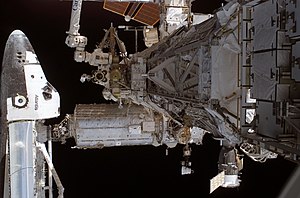The mission of Mach 30 is “to hasten the advancement of humanity into a spacefaring civilization.” But what does that mean? When we talk about a “spacefaring civilization,” we are talking about the promises of the 1960s made real. Consider the film 2001: A Space Odyssey, released in April 1968 over a year before the first humans walked on the Moon. This movie predicted that by 2001 major airlines would be offering regular service to Low Earth Orbit using reusable space planes. It also predicted there would be multiple, extensive lunar bases. And, let’s not forget that the defining mission to another planet is not to Mars (been there, done that?) but to Jupiter and its moons! This is something that not even the most forward looking advocates of space exploration are discussing.
2001 is not the only example from the 1960s that makes these kind of predictions. There are a number of of books, videos, and other material that all promised a very similar future (routine access to space, lunar colonies, expeditions to Mars), all by the end of the twentieth century. Yet, none of this has come to pass. At present, all human access to Earth orbit is still provided by government space programs. And the Space Shuttle, while partly reusable, does not come close to being the kind of space plane that can make routine flights to space (commercial or otherwise) a reality.
Yes commercial companies are starting to work on access to space, but each of them has to start at square one when they are founded. Just look at the first project of almost every new space company: design and build a rocket engine. Seriously, if you want to start a spaceflight company, the first thing you need to do is design your own rocket engine. This is the equivalent of saying go design your own jet engine to anyone who wants to start an airline.
Still, we believe, some day the kind of future predicted in 2001 (or one very much like it) will come to pass. It is a vision born of the idea that commercial enterprise has developed the tools, technologies, and markets to establish a true space economy. And eventually all of those things will come to pass. It is just in our nature to push the boundaries of what can be done and where we can go. So, reaching this future is less a question of if, and more a question of when.
Given the costs associated with spaceflight (and the amount of effort spent reinventing the “wheel”), it seems reasonable to assume that without any intervention it will take quite a bit of time before we reach the future promised in the film 2001. Our goal at Mach 30 is to shorten the wait. We believe that by applying the principles of sustainability, open source development, and the use of mature technology we can get off the “not invented here” merry-go-round, and instead get on a path toward evolutionary improvements built on a shared foundation of technologies. And that like the explosion of commercial enterprise on the Internet, this shared foundation will lead to new and unimagined markets in space for commercial enterprise to serve.







